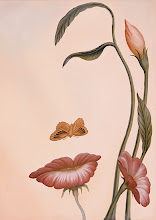William Tell is a folk hero of Switzerland. His legend is recorded in a late 15th century Swiss chronicle.
It is set in the period of the original foundation of the Old Swiss Confederacy in the early 14th century. According to the legend, Tell was an expert marksman with the crossbow who assassinated Gessler, a tyrannical reeve of Habsburg Austria positioned in Altdorf, Uri.
Along with Arnold Winkelried, Tell is a central figure in Swiss patriotism as it was constructed during the Restoration of the Confederacy after the Napoleonic era
The Legend
William Tell, who originally came from Bürglen, was known as an expert shot with the crossbow. In his time, the Habsburg emperors of Austria were seeking to dominate Uri. Albrecht (or Hermann) Gessler, the newly appointed Austrian Vogt of Altdorf, raised a pole in the village's central square, hung his hat on top of it, demanding that all the townsfolk bow before the hat. When Tell passed by the hat without bowing to it, he was arrested. As punishment, he was forced to shoot an apple off the head of his son, Walter. Otherwise, both would be executed. Tell was promised freedom if he successfully made the shot.
On 18 November 1307, Tell split the apple with a bolt from his crossbow. When Gessler queried him about the purpose of a second bolt in his quiver, Tell answered that if he had killed his son, he would have turned the crossbow on Gessler himself. Gessler was angered, and had Tell bound. He was brought to Gessler's ship to be taken to his castle at Küssnacht. A storm broke on Lake Lucerne, and Tell managed to escape. He went by land to Küssnacht, and when Gessler arrived, Tell shot him.
Tell's defiance sparked a rebellion, in which he played a leading part. The struggle eventually led to the formation of the Swiss Confederation. He fought again against Austria in the 1315 Battle of Morgarten.
William Tell died in 1354 while trying to save a child from drowning in the Schächenbach river in Uri.[1] A fresco in a chapel in Bürglen, which dates to 1582, depicts this scene.







